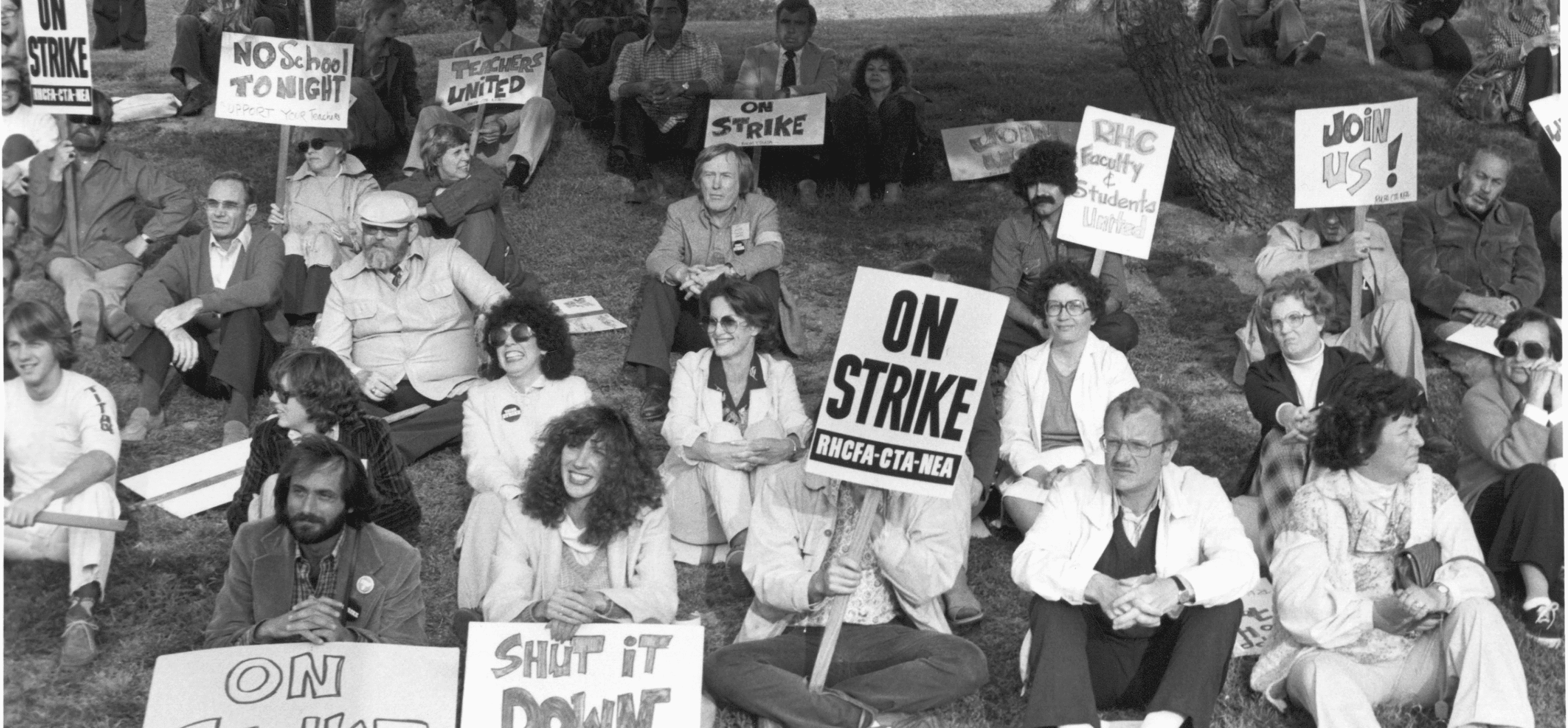Union Strong
CTA has been at the forefront of the labor movement since its birth more than 150 years ago, fighting for educators’ rights and a quality education for every public school student. CTA’s rich history of advocating for worker rights and workplace protections continue today.
Unions are working people advocating and uniting together. When working people unite, we can bargain for better pay, safer working and learning conditions, and decent benefits. When working people unite, we have power, which makes the American Dream attainable for everyone.
Union members work together to negotiate and enforce a contract that guarantees the things we all care about like a decent wage, affordable health care, job security and a stable schedule.
The Value of Collective Voice: Union Facts
Better Pay and Benefits
Did you know union members earn better wages and benefits than workers who aren’t union members?
- On average, union workers’ wages are 22% higher than their non-union counterparts.
- More than 75% of union workers have jobs that provide health insurance benefits, but less than half of non-union workers do.
- Unions help bring more working people into the middle class. In fact, in states where people don’t have union rights, workers’ incomes are lower.
Secure Retirement
Did you know working people in a union are five times more likely to participate in an employer-provided pension plan than working people without a union?
Productivity
Did you know unions help employers create a more stable, productive workforce—where workers have a say in improving their jobs? Unions also provide a voice on the job, which is something that money can’t buy.
Source: AFL-CIO
The History of NEA, ATA Merger
For over a century, the National Education Association and the American Teachers Association had been on a parallel course for justice and equality for the nation’s school children—sometimes working together toward a common goal. NEA and ATA joined forces to support the Supreme Court’s landmark decision to integrate America’s public schools. In this story, we celebrate the historic merger of two great organizations into one single dynamic Association 50 years ago this year.
Women Will Become Majority of the Union Workforce by the Year 2023

San Jose teachers, 1975
An issue brief from the Center for Economic and Policy Research found that even after controlling for factors such as age, race, industry, educational attainment and state of residence, women in unions receive a substantial boost in pay and benefits relative to their non-union counterparts.
Unionized women workers on average make 12.9% more than their non-union counterparts, are 36.8% more likely to have employer-provided health insurance and 53.4% more likely to have participated in an employer-sponsored retirement plan.
At every education level, unionized women are more likely to have employee benefits than their non-union counterparts, but the effect is largest for women who have less formal education. For a woman with a high school degree, being in or represented by a union raises her likelihood of having health insurance or a retirement plan by more than earning a four-year college degree would.
Resources for Educators: Labor History & Education
The Zinn Education Project
The goal of the Zinn Education Project is to introduce students to a more accurate, complex, and engaging understanding of United States history than is found in traditional textbooks and curricula.
Labor Education in California from CA Labor Federation
Labor education is a priority for the union movement today. From students first learning about the labor movement to well-seasoned organizers, it is crucial to keep educating ourselves about issues like organizing, bargaining, strategic planning, leadership strategies, the economy and public policy. View links to many of the important educational programs happening across the state of California.
The History of Labor Day
Labor Day, the first Monday in September, is dedicated to the social and economic achievements of American workers.

